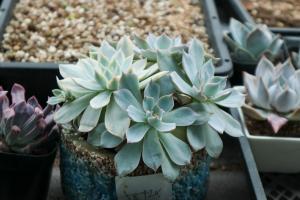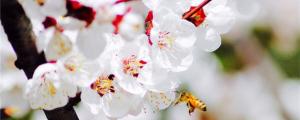Introduction
Newly planted cherry trees require a lot of care and attention to ensure they grow and thrive properly. One important aspect of this care is watering. Cherry trees require consistent and adequate watering, especially in their early years. In this article, we will discuss how often to water newly planted cherry trees to ensure they receive the proper amount of water.
Factors Affecting Watering Frequency
The frequency of watering newly planted cherry trees depends on several factors such as climate, soil type, and tree age. In hot and dry climates, cherry trees require more frequent watering as they lose water through transpiration. Sandy soils, on the other hand, drain water quickly and may require more frequent watering than clay soils. Additionally, newly planted trees require more frequent watering than established ones since their roots are still developing.
Watering Schedule for Newly Planted Cherry Trees
For the first two to three weeks after planting, newly planted cherry trees require daily watering to allow the roots to establish. Water the tree slowly for about 30 seconds to one minute, ensuring that the water reaches the root zone. As the tree roots become established, reduce the watering frequency to three to four times per week. However, the frequency may vary depending on the factors mentioned earlier.
Watering Method
The method of watering is just as important as the frequency. Cherry trees need deep watering to encourage deep root growth. Deep watering involves watering the tree slowly for a longer period to allow the water to penetrate deep into the soil. This method encourages the roots to grow deeper, making the tree more resilient to drought. Additionally, avoid watering the tree's foliage as it can lead to fungal diseases and sunburn.
Signs of Overwatering or Underwatering
It is essential to monitor newly planted cherry trees to ensure they are receiving the right amount of water. Overwatering can lead to root rot, which can damage or kill the tree. Signs of overwatering include yellowing or wilting leaves, mold or fungal growth, and waterlogged soil. Underwatering, on the other hand, can cause the leaves to dry out and curl inward. The soil around the tree may also become dry and cracked.
Conclusion
Watering is crucial for newly planted cherry trees as it influences the tree's growth and survival. The frequency and method of watering depend on several factors such as climate, soil type, and tree age. It is essential to monitor the tree for signs of overwatering or underwatering to ensure the tree's health. By following the tips outlined in this article, you can be sure your newly planted cherry trees receive the proper amount of water they need to grow and thrive.

 how many times do yo...
how many times do yo... how many planted tre...
how many planted tre... how many pine trees ...
how many pine trees ... how many pecan trees...
how many pecan trees... how many plants comp...
how many plants comp... how many plants can ...
how many plants can ... how many plants and ...
how many plants and ... how many pepper plan...
how many pepper plan...































